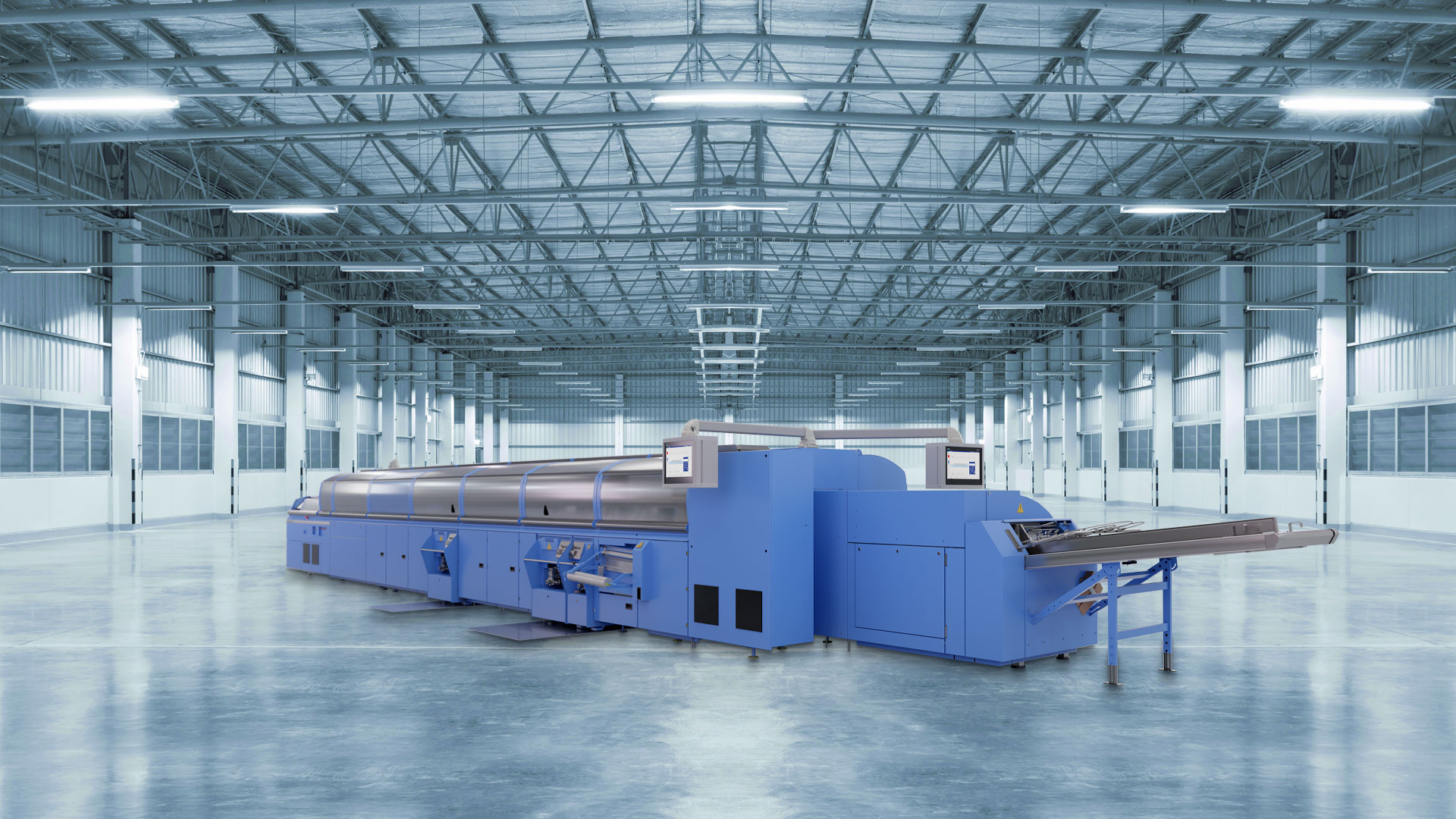This text is reproduced with kind permission of Muller Martini, you can read the original article first published here.
Even though softcover products are no longer printed in runs of hundreds of thousands, even millions of copies as they were a decade ago, high-performance perfect binding is still very important. Because Muller Martini believes in the future of high-quality leaflets and brochures, the market leader for finishing systems is launching a new generation of perfect binders in three performance classes with the Publica PRO.
A modern machine design in laser blue, easy operation, advanced technology, optimized processes – the new, high-performance Publica PRO generation of perfect binders from Muller Martini offers a high net output, the best quality, short setup times, few stoppages and little production waste.

The Publica PRO, designed for magazines, catalogs and high-volume publications, is available in three performance classes.
The successor to the KM 412, which is already well established on the market, features a number of innovations.
- New monitoring connection: The three swivel monitors have been placed in user-friendly positions, making plus/minus buttons in the belt area unnecessary.
- New CoPilot system (Siemens NX): The 19-inch multi-touchscreens, which can be reached from all operating sides, have the same swipe function as smartphones, a customizable interface and the ability to save individual profiles, giving it a high level of operator friendliness.
- Optimized clamp chain: Chain wear and tear has been minimized thanks to the smaller clamp chain and adjustment of the chain drive. Manual tensioning of the clamp chain is no longer necessary because of the new automated tensioning system.
- Automatic glue film length adjustment at the spine glue station: Servo-driven doctor blade control for highly precise application and distribution of glue – especially when using shorter covers.
- New side gluing discs: The slanted arrangement of the side gluing discs prevents the first and last page from becoming separated during the gluing process, which can occur depending on the material used. Compared to the horizontally arranged gluing disks used previously – in the KM 412 and older perfect binder series – the improved slanted profile also prevents the removal of the stitching.
- Optimized cover transport: The use of ball screws improves scoring quality and precision. The scoring is enhanced thanks to the rounded contours of the scoring units. The pneumatic movement of the top roller enables easy adjustment of the scoring units in a just a matter of seconds at the push of a button.
Optionally, VPN nozzles from Robatech can be used with the Publica PRO for precise and economical glue application.
Three Performance Classes: 12,000, 15,000, 18,000 Cycles
The perfect binding line, which is ideal for magazines, catalogs and high-volume publications, is available in three performance classes: 12,000, 15,000 and 18,000 cycles per hour (see graphic). The 12,000-cycle version can also be used to produce hardcover book blocks and spine strengthening is possible by using a lining station.
The Publica PRO, which is predestinated for single sheets and thin print runs, demonstrates its full flexibility with the ZU 842 suction-belt gathering machine, which has an output of 18,000 cycles per hour. It pulls off in the direction of material flow so that there is no wear and tear and separates the sheets via a suction belt in the running direction of the chain. The ZU 832 gathering machine (up to 12,000 c/h) is also available as an economical alternative.
Thanks to its modular design, the standard feeders up to 3 mm signature thickness (but extra feeders up to 5 mm are also possible as an option) can be easily replaced with a feeder for pre-folded signatures at the binding side or signatures with folded-in flaps as well as parallel folded or zigzag folded signatures that will be bound at their open side. The KK 842 card gluer processes a wide range of products (glued-in cards/booklets/CDs in covers /product samples). The electrostatic fixing of advertising media is also possible as an option.
